From the 1830s to the early 1900s, railways were built across Scotland at an astonishing rate. Some served industry, others carried commuters or long-distance travellers while others were specifically aimed at tourists. Many survive while many others have gone. However, some of those aimed at tourists still attract them, even where trains no longer run.
The Blane Valley Railway and its extension, the Aberfoyle Branch, were designed to provide scenic journeys from Glasgow to the southern edge of The Trossachs, countryside that appealed especially to readers of Sir Walter Scott’s novels. As early as 1848, a branch line came off at Lenzie on the main Glasgow – Edinburgh route, and pushed through Kirkintilloch to Lennoxtown on the southern slopes of the Campsie Fells. It was extended as the Blane Valley Railway through Strathblane to Killearn in 1867.
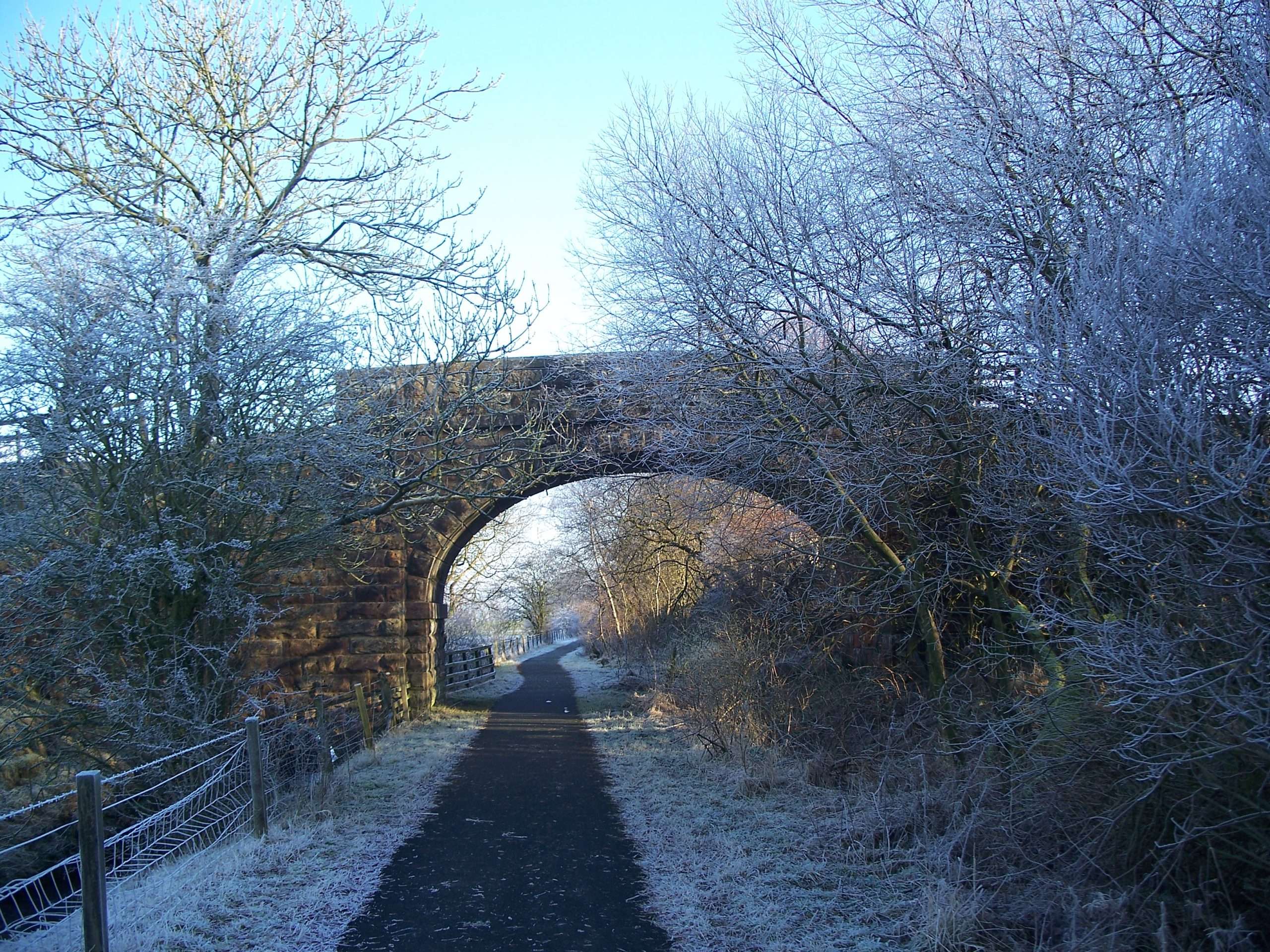
Eventually, in 1882, the route was complete through to Aberfoyle. Aberfoyle remains a tourist honeypot, though, sadly, few visitors today have read any Scott. Both Waverley and, especially, Rob Roy had links to the Aberfoyle area. Visitors used to flock to the Baillie Nicol Jarvie Hotel in the village, named after a character in Rob Roy. It’s now been converted to flats, but a caricature of Jarvie can still be seen on the gable end.
Changing onto a branch line
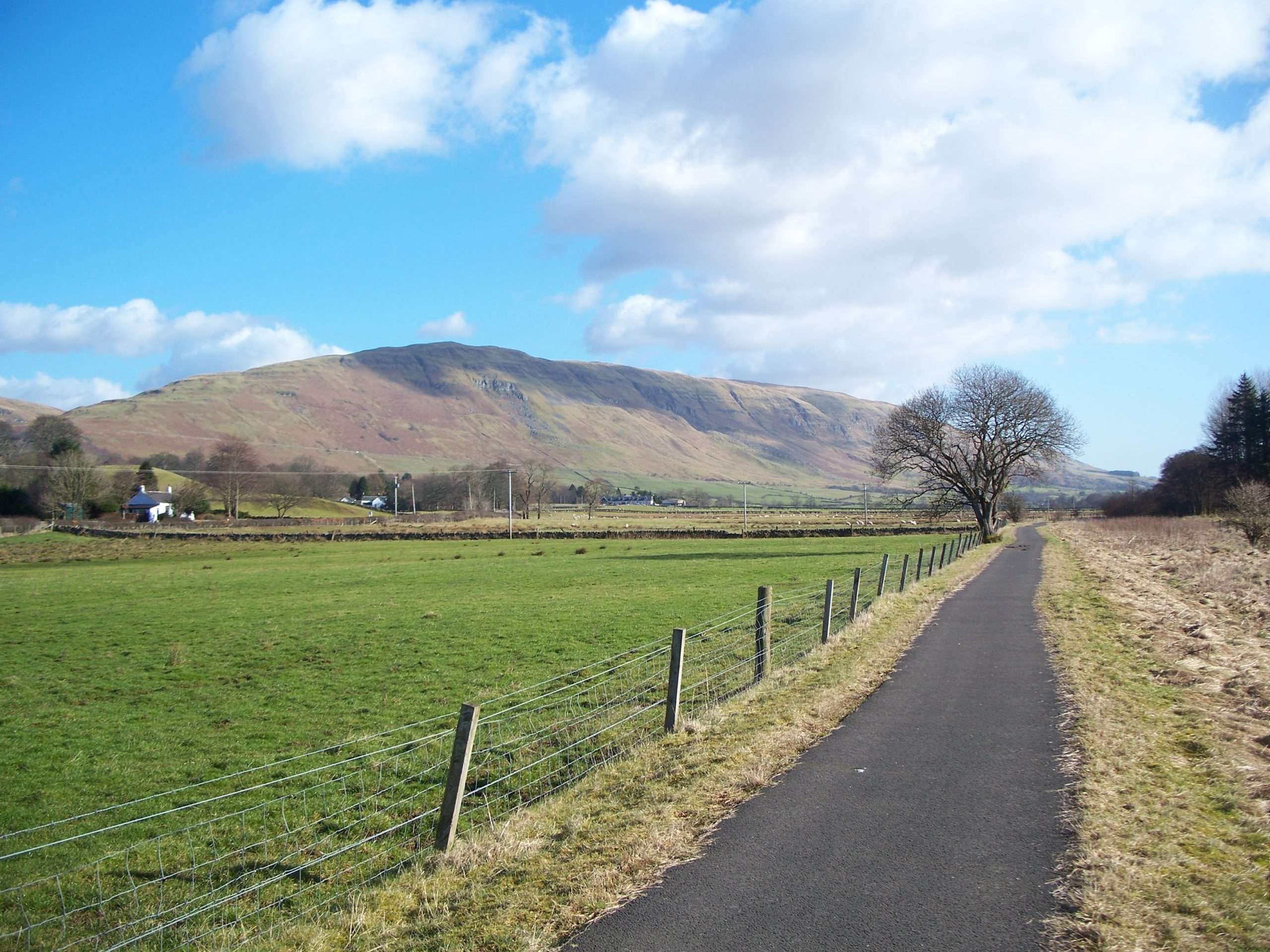
Motor road transport was the death knell of the railway. Beyond Kirkintilloch, all passenger services stopped in 1951. By 1966 the whole system had gone. Slowly, however, the potential for gentler forms of travel began to be recognised. Paths for walkers, cyclists and horse riders were developed on the former trackbed. Today you can walk, ride or cycle from Aberfoyle to Buchlyvie, crossing the famous Flanders Moss, using the former railway. The West Highland Way long distance footpath runs along another stretch of the route, in the scenic valley of Strath Blane. And then, running from Strathblane village to Lenzie, there is the Strathkelvin Railway Walkway. Lenzie Station remains open, so that when you alight from a train there, intent on walking or cycling to Strathblane, there’s still a sense of changing onto a branch line.
Old railways make great paths. The gradients are easy and even on the urban stretch through Kirkintilloch there are trees and greenery. Two miles on, at Milton of Campsie, local volunteers have transformed the platforms of the former station into an attractive public space with seating and sculptures and floral displays. The route continues roughly westward, following the Glazert Water upstream, with the Campsie Fells occasionally seen through trees to the north.
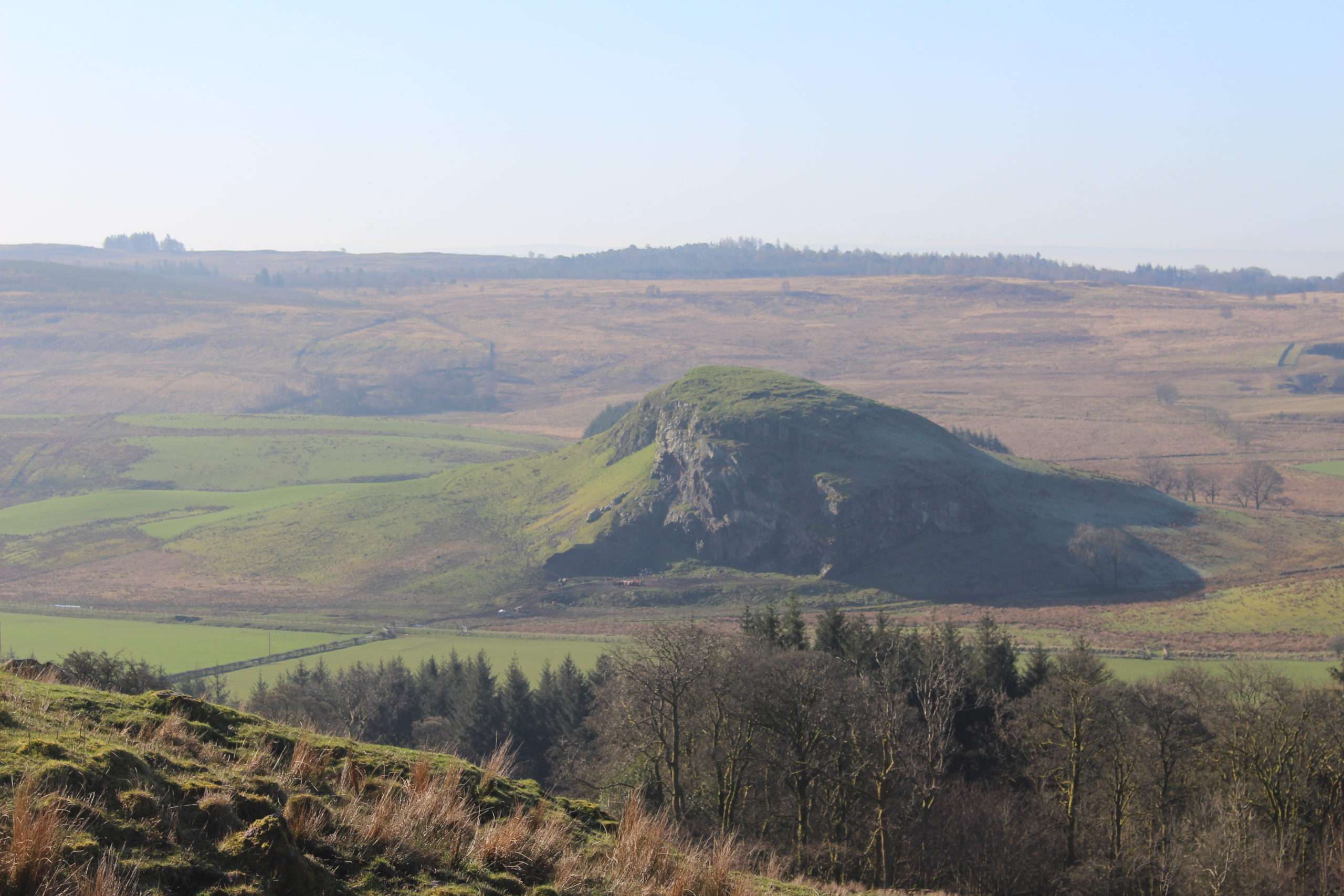
Beyond Lennoxtown the route runs through the grounds of the former Lennox Castle estate. Lennox Castle, actually an 1840s mansion, is now a ruin but Celtic Football Club’s main training facility occupies part of the grounds. A branch track runs off right along the banks of the Glazert to Campsie Glen, where the burn tumbles out of the hills in a series of wooded waterfalls. It was a real holiday spot in days gone by and hundreds of people would disgorge from Campsie Glen Station (actually nearly a mile’s walk from the glen) on summer Saturdays.
The main route continues through the Lennox Forest, but when it emerges from the trees the views become breathtaking. At last, the Campsie Fells are seen at their most spectacular. As a local resident I often cycle out this way and I still have to stop here and look and marvel. I like to think it’s the equal of any view in the Highlands or Lake District. And I can never stop myself from wondering what it must have been like to travel here by train. Of course, we shouldn’t romanticise rail travel in the steam era. A choking cloud of smoke would have accompanied every train, and passengers would emerge under a fine coat of dust!
Very much still there
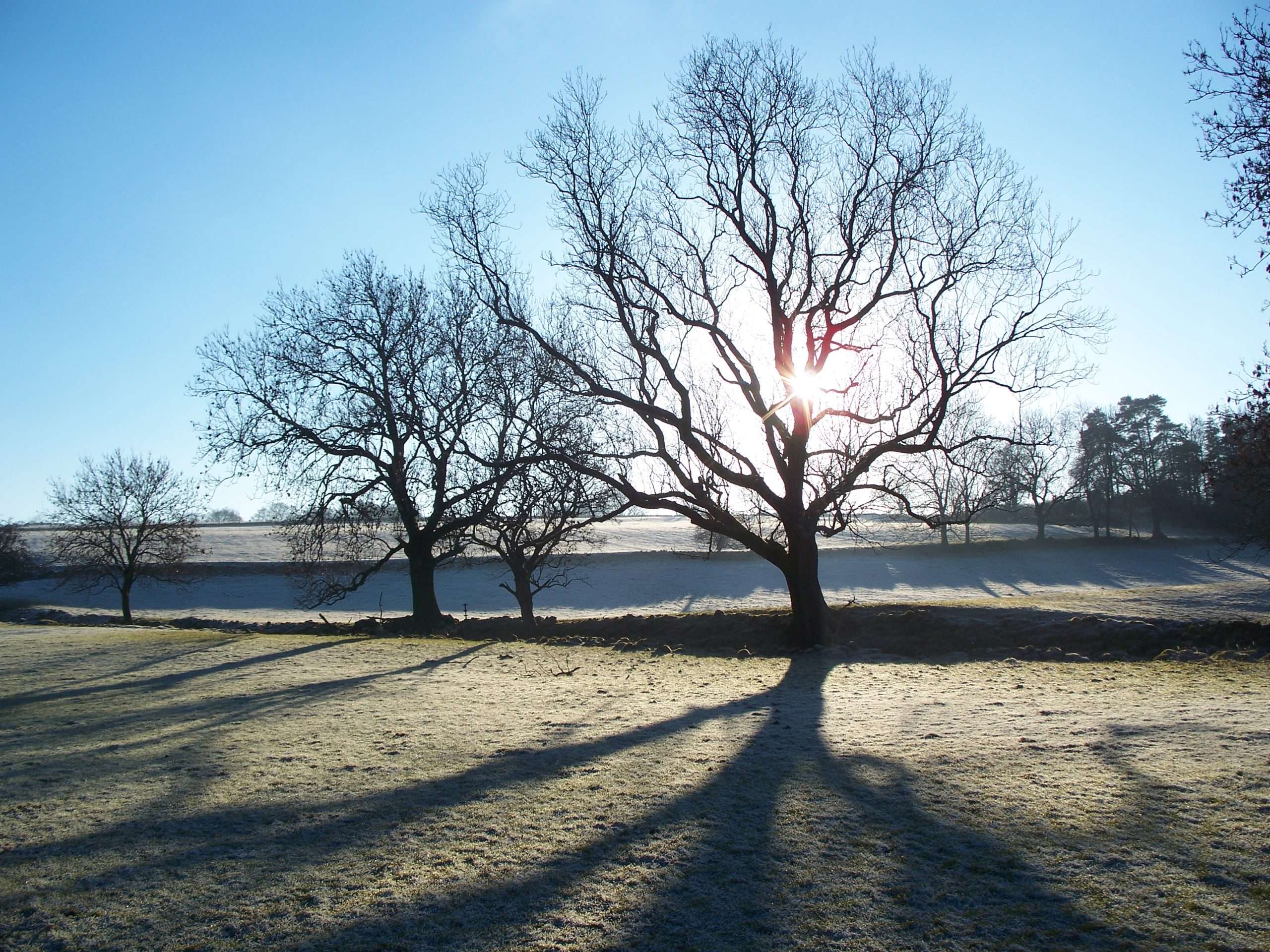
A highlight on the final run to Strathblane is a stone bridge that carries the access road to Craigend Farm over a small burn as well as the railway, with a separate arch for each. It’s a beautiful structure, still doing its job 65 years after the last train ran underneath it. The obvious wooded gorge visible to the north on the Campsie slopes is the Ballagan Glen, which is a Scottish Wildlife Trust reserve for the window it opens on the geology of the Campsies.
To the south of the railway is the curious little lump of Dunglass, a volcanic plug (for the Campsies were volcanos back in geological time!). Notice that some of its crags are formed of columnar basalt, like Fingal’s Cave or the Giant’s Causeway in Northern Ireland.
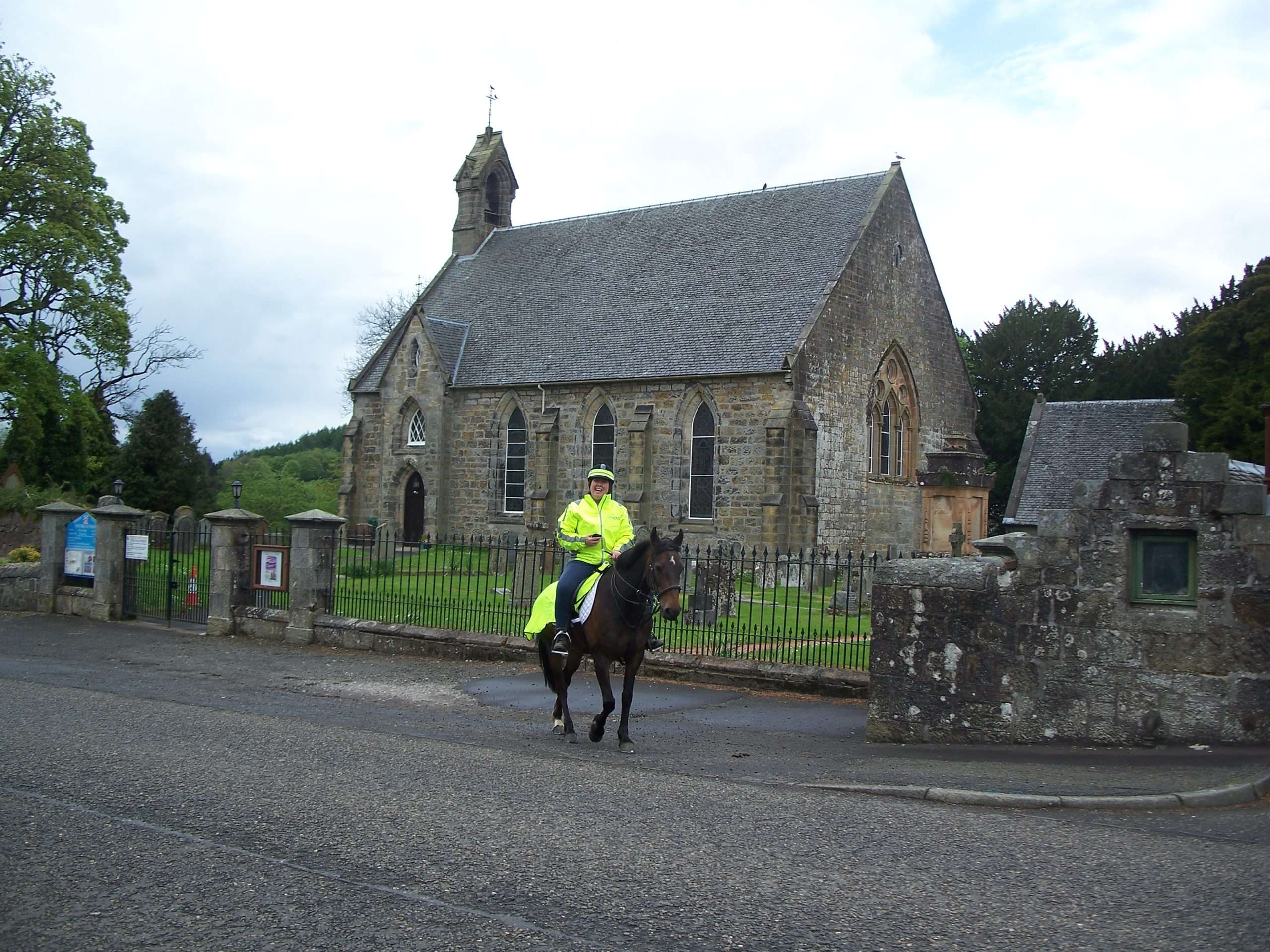
As you enter Strathblane the line has been built over, so a path takes you up to the A891 near Strathblane Kirk. The Kirkhouse Inn, at the junction of the A891 and A81 will welcome you as will Milne and Byrne’s Coffee House further along the A81; but there’s plenty more to do here. The Campsie Fells beckon, and there are other paths to try – the John Muir Way, which follows the Strathkelvin Walkway from Kirkintilloch, continues west while the Pipe Track leads you along the western flank of the Campsies.
The West Highland Way and Mugdock Country Park aren’t far away either. If you’ve had enough, there are buses back to Glasgow from here. They stop at Milngavie Station, and after experiencing the work of Victorian railway builders, you may want to alight there and continue your journey to Glasgow on a surviving railway.
The Blane Valley Railway has long gone, yet for locals and visitors alike it’s very much still there.
Main photo: Walkers and a cyclist where the walkway emerges from Lennox Forest.

